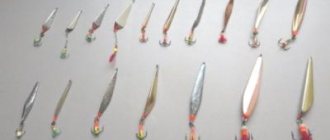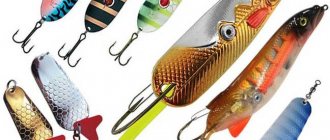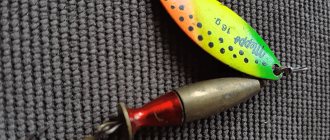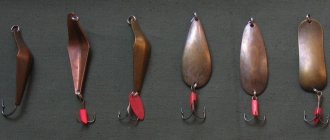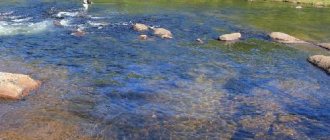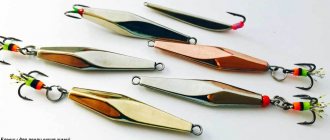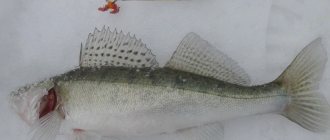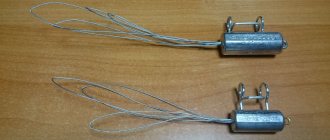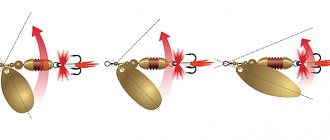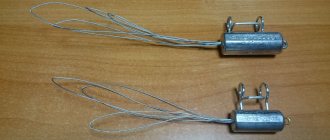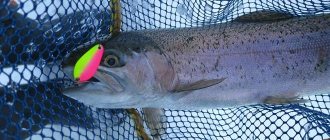Experienced fishermen appreciate homemade tackle. For example, making a spinner with your own hands is a kind of mastery of a special art. Although this activity is not very difficult and does not require large expenses.
But now in Russia there are many real enthusiasts and masters of this business, and a lot of options for such spinners have appeared. And many of them are much more catchy than the most expensive branded ones, because they are adapted specifically to a given fishing location and to the specific predatory fish living in that reservoir.
Advantages
The famous author of books on spinning fishing, Viktor Andreev, once described an interesting case. One day he and his friends came to the same lake to catch pike. Moreover, they came purposefully, since, according to the stories of other fishermen, these gray predators were visible and invisible in this reservoir. We settled down and took out branded spinners. They started throwing - nothing. Not a single loot. We were already getting ready to leave, and a guy came ashore with some kind of rusty homemade spoon, and let’s carry large pikes.
The fishermen couldn't believe their eyes. And the reason turned out to be simple. The fact is that in this lake pike are accustomed to hunting rotans. They are dark in color. And the city spinners arrived with branded shiny spoons, to which the pike did not react.
They had to urgently smoke their imported gear over a fire. Since then, according to the author, he became interested in homemade fishing equipment and now considers them his most favorite equipment.
Indeed, the advantages of homemade spinners include the following factors:
- you can make your own custom-made tackle, which will be catchy exactly in the body of water where you usually fish;
- it is not difficult to make from almost any available materials;
- financial costs are minimal;
- the manufacture of such gear is considered simple;
- the field for experimentation is simply huge;
- the number of fishing lures depends on your desire;
- such home production does not take much time;
- Finally, the small cost will not make you particularly sorry if the bait breaks - you will make another one.
Why do you make oscillating spoons yourself?
Before justifying this need, let’s consider what it may depend on:
- The need to replace bait when fishing conditions change. This may be a sharp decrease or increase in illumination associated with weather conditions.
- A change in the direction and strength of the wind, as a result of which the acoustic conditions in the reservoir become different.
- Unproductive fishing, in which you need to try different color or weight characteristics of the spoon.
- Fishing in heavily overgrown reservoirs, when there is a clear need to protect the hook from snags.
There may be other reasons that make it necessary to frequently replace the bait.
Losses of baits are the main reason that a fishing box should always be full of various lures, including oscillating ones. After all, it’s not difficult to make them yourself, but buying them is a little expensive. A homemade spoon is much cheaper, sometimes its cost is estimated only by the time spent on manufacturing.
In addition, every fishing enthusiast knows exactly what needs to be changed in the shape or design of the bait to make it catchy.
comparison table
| Type of spinner | Shop | Homemade |
| Catchability | Expensive foreign models have high catchability | A properly made spinner is no less catchy |
| Price | Foreign gear can cost up to several thousand rubles | Material at hand can be found literally at hand |
| Coloring | It can be attractive due to the cost of the product | You have the opportunity to choose the color for each body of water |
| Weight | Cheap models are too heavy | Weight is collected during the manufacturing process |
| Preparation method | Stamped in production without individual differences | Made by hand |
Now it’s clear why many Russian fishermen prefer to prepare their own tackle. But if your financial capabilities allow you, you shouldn’t refuse high-quality foreign products either.
Expert opinion
Knipovich Nikolai Mikhailovich
Zoologist, hydrobiologist. I am interested in fishing at a professional level.
Important! Some fishermen closely monitor new store-made products, buy them for review, and then make improved analogues.
And the main thing to remember when choosing a spinner is that the cheaper it is, the poorer the quality of the material from which it is made , it will oxidize. And it’s unlikely that anyone will make a homemade product from completely waste metal.
Tips for making silver lures for perch
Advice one. If you have the opportunity somewhere at a factory to roll out silver coins to a thickness of 0.1-0.15 mm, then before making winter vertical lures for perch, the resulting thin silver sheets should first be annealed.
This must be done, since after mechanical processing large stresses arise in any metal. Unannealed silver blanks are difficult to straighten, so when making the petals of winter spinners, microcracks may occur.
Tip two. To make each silver perch winter vertical spoon, start drawing the petal along the very edge of the metal drag. Cut out the workpiece and only after that, again, along the edge of the thin-rolled silver, draw the outline of the next vertical perch homemade product. And so on.
Tip three. Do not throw away fine silver scraps. On scraps of silver you can knock out crowns for jigs of one shape or another size for winter fishing. The technical process is described in the topic Making jigs for fishing
Tip four. Do not throw away even the smallest waste of silver after cutting out blanks of winter lures for catching perch. They can be soldered in the form of strips or pads onto the surface of lead jigs of the “Uralochka” class. This way the fish can see them better in the darkness of the depths.
Each small silver scrap of thin metal can be flattened with a hammer on a metal plate to make a jig crown, thereby increasing its area. After this, it is also advisable to anneal the silver blank.
Tip five. During final processing, do not level the silver surface of the manufactured winter lure for perch with sandpaper and, especially, with a file. This way you can wipe it down to solder.
Just rinse the finished winter vertical or horizontal perch spoon - balancer first in hot water, then wipe with solvent, and polish the surface of the silver with the tip of a needle.
Small dents on the thin silver petal of a perch spoon will not in any way affect the performance of perch fishing either in winter or summer.
Last tip. Stop doing nonsense and transferring money to the dubious pleasure of catching predatory fish with underwater jewelry.
Your winter spinners, made not from silver, but based on cheap cupronickel or thin walls of instant coffee cans, will not be distinguished by any fish, including perch, from silver ones.
Materials for making lures for perch
We have more than enough materials for making winter spinners for perch fishing on our own in everyday life even without silver. Articles about this are posted on subsequent pages of this topic.
And you can believe me - making and setting up a working set of winter lures for perch at home is not at all difficult, as I was convinced of in my own practice many years ago.
And, to be honest, I don’t remember when I bought bait, including jigs, in a store, especially from my own hands. And it's not about money. Simply making a batch of winter lures for perch of a couple of dozen pieces only takes half a day.
But at the end you get homemade products made with the parameters you personally need, most suitable for the winter conditions of catching perch in your favorite body of water.
The site offers you detailed technical processes for independently manufacturing winter perch, zander and pike vertical lures, with patterns, archives of which can be downloaded from the main page of the site.
Most of these so-called “winter” vertical baits, including those intended for catching perch, can be placed on summer gear during open water.
Spoons for different fish
For zander
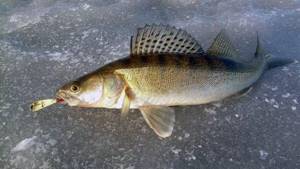
Pike perch is a fish that loves space and oxygen, so it is useless to catch it, say, in a wetland. And in winter you have to try really hard to find it. But catching this fish also has its advantages.
Expert opinion
Knipovich Nikolai Mikhailovich
Zoologist, hydrobiologist. I am interested in fishing at a professional level.
Important! Unlike pike, pike perch often rushes to the bait immediately, so the fish’s approach can be expected immediately after casting.
A few years ago, ordinary spoons were used to catch this species. But gradually they were replaced by rotating models and silicone baits. However, there are places where spinning anglers achieve good catches with old-type models.
Here is an example of making a simple but catchy model for pike perch:
- We cut out a template of the required shape and size from cardboard, usually 6-10 cm;
- apply the template to the metal from a tin can;
- cut out;
- clean with sandpaper;
- We make 2 holes along the edges and thread wire through them;
- bend the ends with the holes at an angle of 90 degrees;
- We attach a small bead to the wire on one side;
- attach the hook so that it is in a hanging position.
The tackle can be brightly colored; pike perch loves bright colors . In muddy water, you can also tint a bead.
Now we check the rotation of the spinner. To do this, just blow on it. Spins - go fishing.
For pike
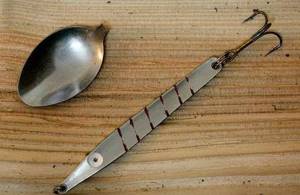
Pike is one of the most desirable prey for spinning anglers. Usually it is caught using homemade spoons, as they are very easy to make. The material you can use is:
- stainless steel;
- lead;
- copper;
- tin;
- brass.
The latter material is the most attractive of all; it oxidizes less.
The easiest way to make a spoon for pike is to cut off the handle of an ordinary spoon and attach a hook to it and a ring on the other side for fastening. This tackle is very reminiscent of bleak, and pike love it.
In winter, pike are caught using a balancer - the only spoon that moves vertically in the water. To do this, a blank is cast and a fixture for fastening is made in the middle of the simulated fish. The casting mold is usually made of plaster.
For perch

Ichthyologists distinguish two types of perch: small grass and deep-sea. Therefore, when going fishing for this fish, take into account its size: small perch will never approach large bait. The optimal size is 5 cm.
Perch is an active fish. He needs to be attracted by the game of the spinner. But he is also curious, so fishermen often attach tassels, artificial fins or simply bright beads to their homemade products.
Expert opinion
Knipovich Nikolai Mikhailovich
Zoologist, hydrobiologist. I am interested in fishing at a professional level.
Important! Often these elements serve as a camouflage for hooks that can scare away fish.
But what can attract perch is the color of the bait. Moreover, it is not at all necessary to make it yellow or shiny. Some fishermen claim that this fish willingly goes for a red-colored spoon, while others catch it with a blue one.
Making your own spinner is also easy. It is interesting, for example, to use ordinary medical tweezers. The required workpiece is cut out of it, and part of it should be corrugated, and the other should be smooth. Hook, tail, etc. are attached according to the general scheme.
Oscillating spoon - “stamping” or “casting”?
It would seem that how many copies have been broken on the topic of manufacturing the well-known “oscillators”. How many smart articles have been written about the shapes and various bends of the oscillating spoon and its play depending on the shape in different fishing conditions. However, no one has ever dug deeply into the topic of the material and method of making the spoon and the effect of this on its catchability! Why are cheap Chinese “stamped” spinners worse than “cast” spinners? Or is it better? Well, let's try to figure it out. Methods for making oscillating spoons
Basically there are three of them: forging, stamping and casting. The first is a rarity - it is mainly used by “homemade” people to make heavy spinners for large predators, the second is the most common due to its mass production and low cost, and the third is expensive, but the most accurate. Let's take a closer look. Forging A piece of metal (copper, brass, stainless steel) is taken and a shape is cut out. Sharpened with sandpaper. Then, using a rounded hammer and anvil, the desired shape of the bait is hollowed out

Pros:
+ any person with hands can, given the availability of material and free time, forge himself the lure he needs.
Minuses:
-material costs (unless, of course, you work in a factory or metal warehouse)
- not shiny appearance of the product
-it’s difficult to make an exact copy of a catchy spoon
In general, it is clear from this that this is a non-industrial method of making spinners for those who like to get handsy on long winter evenings. I have nothing against homemade people - sometimes they come up with things that are more catchy and stylish than factory-made things. But my article today is not about homemade methods of making spinners, but about factory ones. So let's return to our topic.
"Stamping"
Actually, this is the most widespread and widespread method of making oscillating spinners.
To make an oscillating spoon using the “stamping” method, a matrix and a punch (“press”) are taken, a sheet of material is taken (steel, brass, copper—mainly cheap steel is used in mass production) and the workpiece is cut out with a press.
Minuses:
- Large percentage of defects
— Low accuracy of spinners copying
Pros:
+ low cost of production
"Casting"
This is the most cost-effective, but most accurate method of producing oscillating spoons.
To make a spoon using the “casting” method, you need an exact shape and material (not only brass, but also material for preliminary casting into the mold (wax) and material for the mold, and this is for each spoon!). Molten metal is poured into a mold and solidifies. After this, it goes through many stages of secondary processing from sanding and electroplating to coating with several layers of varnish. Thus, using the high-precision casting method, an exact copy of the spoon is obtained time after time.
Cons:
-High cost of equipment and materials
pros:
+ High manufacturing precision
+ Almost 100 percent guarantee of absence of defects
Summary
Thus, adding up all the pros and cons, we came to the conclusion that the process of making a spinner using the casting method produces the most accurate copy with virtually no defects every time.
Now let's see how many manufacturers on the modern spinner market make spinners using the “casting” method. Unfortunately, we can count them on the fingers of one hand. Except for a few Japanese companies, and even then only in individual series, practically no one. How are things going here in Russia? It's all very sad too. Most “manufacturers” prefer to order stampings under their logo from China. So it’s more economically feasible - by investing a ruble, you get 100. Now is the time - the time of marketers. However, we must remember that marketers have already ruined many well-known brands that produced high-quality fishing products in small quantities of their own. For which fishermen valued these companies. An example of this is the world-famous House of Hardy company, which at one time was the standard of English quality, and has now been taken over by the Pure Fishing concern, like most of the once famous companies that it absorbed.
As a result, it turns out that the RB
is the only one in the post-Soviet space that has its own production in Russia and that produces spinners using high-precision casting. And it’s good that there are still manufacturers who do not repurchase cheap Chinese labor, but produce high-quality goods for reasonable money at their own production facilities in Russia.
To be continued….
Material for production
White spinners
This type of tackle is the most popular among spinners . The white spinner is similar in color to a fish with white scales. And the predator comes at her willingly. Typically used for manufacturing:
- steel;
- zinc;
- cupronickel;
- silver.
The first two materials are easy to manufacture, but have one significant drawback - they give a bright reflection, especially in sunny weather. This may scare away the fish. Therefore, steel and zinc are used for fishing in cloudy weather.
But cupronickel and silver do not react this way to sunlight, and in general, many fishermen endow especially silver with magical properties of catchability.
Brass
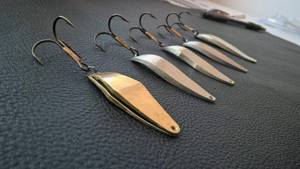
Sometimes, for completely inexplicable reasons, predatory fish stops noticing white spinners and starts chasing yellow ones. Basically, they are made of brass. To do this, you can purchase standard brass sheets or use old utensils that were previously made.
Craftsmen make good spinners from copper.
Aluminum
Excellent workable material, easy to polish. But due to the lightness of such blanks, they often have to be weighed down. And this metal quickly oxidizes in water and acquires a gray tint. Therefore, it is recommended to paint lures made from this material.
However, the same lightness of this bait provides an excellent opportunity to arrange an exciting game with it both in winter and summer.
Stainless steel
Has a high safety margin. Easy to cut and bend. Hobbyists often use stainless steel tubes that are weighted with lead. A very catchy tackle in winter with vertical trolling.
Many people note the good sinking speed of this bait.
It is believed that it is especially good at catching pike perch .
Making rotating spinners - homemade products for fishing
Spinner baits are, of course, possible to buy at any fishing store.
But for a real fisherman, making tackle with your own hands is a pleasure that is no less exciting than the fishing process itself. We offer a simple design for making a rotating spoon, accessible even to those who first took up the tools to create it. Rice. 1 Templates Tools you will need:
• Metal scissors. • Spoon. • Hammer. • Wooden knockers made of oak or beech. • Drill • Backing. • Drill. • Sanding paper. • Felt. • Paste GOI. • Core. • Pliers. • Round nose pliers. • Soldering iron. • Wire cutters.
Step 1 Remember that you will need a matrix. Typically, for this role, master fishermen use an ordinary deep teaspoon. An additional weight is cast from a wooden mold. Its weight should be 15-20 grams (overall dimensions 26x15x6 mm). Make a template: see Fig. 1. Cut out the workpiece. Polish it on both sides. We place the prepared workpiece in a spoon and, using not very strong blows of the hammer on the drift, give the future lure the required shape. We recommend starting to do this from the edges, gradually moving towards the center of the part. Note that if the convexity of the product should be increased, then the workpiece itself is smoothly shifted closer to the handle.
Step 2 Use a core to mark the center of the future spinner. To do this, at a distance of, say, 2-3 mm from the edge of the longitudinal axis, we make a mark and drill a hole. If necessary, you need to perform additional polishing of the product, so the fish will like it more.
Step 3 Using pliers, bend the drilled front part of the spoon at a distance of about 5-6 mm from the edge at an angle of about 90 degrees. And now - the long-awaited petal of our amazing spinner is ready! Step 4 Now let's start installation. To do this, the tee is attached to the rod wire. At one end of the wire, use round pliers to make a convenient loop. Next, we make a tee - we wrap the free end around the wire 6-7 times. We remove excess materials using wire cutters, and the sharpest edges should even be soldered.
We wrap the core wire of the spinner with several turns of thin copper wire. This will be the limiter. Next we need to string the bead and the petal of the spinner. To do this, you need to adjust the spinner. The bottom edge of the stopper should not reach the hook loop by 3-5 mm. We smoothly move the limiter along the rod wire. All that remains is to solder the copper wire.
Step 5 At a distance of 100-110 mm from the hook loop, you need to grab the rod wire with round pliers, making a second loop. The twisting area should be soldered. We recommend camouflaging the tee, for example, with red woolen threads or, say, goat hair.

Using fishing line, we tie an additional weight to the spoon at a distance of 200-250 mm. Its thickness should not exceed about 0.3 mm. That's it - the rotating glitter for your fishing is ready!
Source
Become the author of the site, publish your own articles, descriptions of homemade products and pay for the text. Read more here.
Spoons and time of year
At different times of the year, different similar gear should be used and made.
in spring
In early spring, pike do not chase large specimens, but prepare to spawn. And other predatory fish have not yet shown the necessary activity. Therefore, small and running spinners should be used.
In summer
In the summer, it is not the size of the bait that is of great importance, but its ability to play. Use bright colors for painting; at this time of year, it is preferable to choose spinning and moving tackle.
Autumn
In the fall, the fish prepares for the winter; large spoons and heavy spoons are suitable here.
Winter
Here comes the time of balancers - vertical lure displaces horizontal lure. The tackle should be heavy, but easy to play at the bottom.
Making perch spoons from thin metal
To make winter vertical lures, we will need thin sheets or scraps of metal 0.1-0.2 mm thick.
Therefore, as materials for making my first winter lures, I propose using thin rolled metal alloys of different colors.
Cutting petals from thin black or non-ferrous metal and pouring the appropriate layer of tin-lead solder on top is not difficult, even for novice craftsmen.
The photo shows heavy spinners made on thin metal petals for winter perch fishing at significant depths or noticeable currents.
These same vertical baits are used to lure perch and pike perch at a decent depth in the summer.
My first perch winter lures
I already wrote somewhere that I made my first winter perch spoons many years ago, having a minimum of knowledge for this. And, to be honest, there was no knowledge whatsoever.
Just on one of the winter fishing trips I asked a local village fisherman to look at his made winter vertical spoon, with which he continually caught very decent size perches, while almost cutting himself on the sharp jagged edges of his homemade product.
The winter vertical perch spoon was made by a fisherman from the thin metal of the side surface of a tin can, and the edges of the spoon were not even processed around the perimeter. This is where my theory ends.
By that time I had accumulated a lot of various scraps of thin foil of different colors, but until now only jigs had been made from them with my own hands. The first spinners for winter perch fishing at different depths were soldered onto petals of the same thin metal.
True, the first experience of making spinners was not very successful, which became clear on the very next fishing trip. After which I had to redo almost all the homemade perch spoons, adjusting their structure.
How to decorate a finished spoon
We have already said that colored threads, cambrics, and beads are suitable for decoration, just do not overdo it with colors.
Expert opinion
Knipovich Nikolai Mikhailovich
Zoologist, hydrobiologist. I am interested in fishing at a professional level.
Important! Often the so-called attack point helps out - a dot drawn on the fish that imitates an eye.
Some people make artificial bait skirts or tails from Christmas tree decorations. Someone draws lines in the form of ribs - there is plenty of room for imagination.
